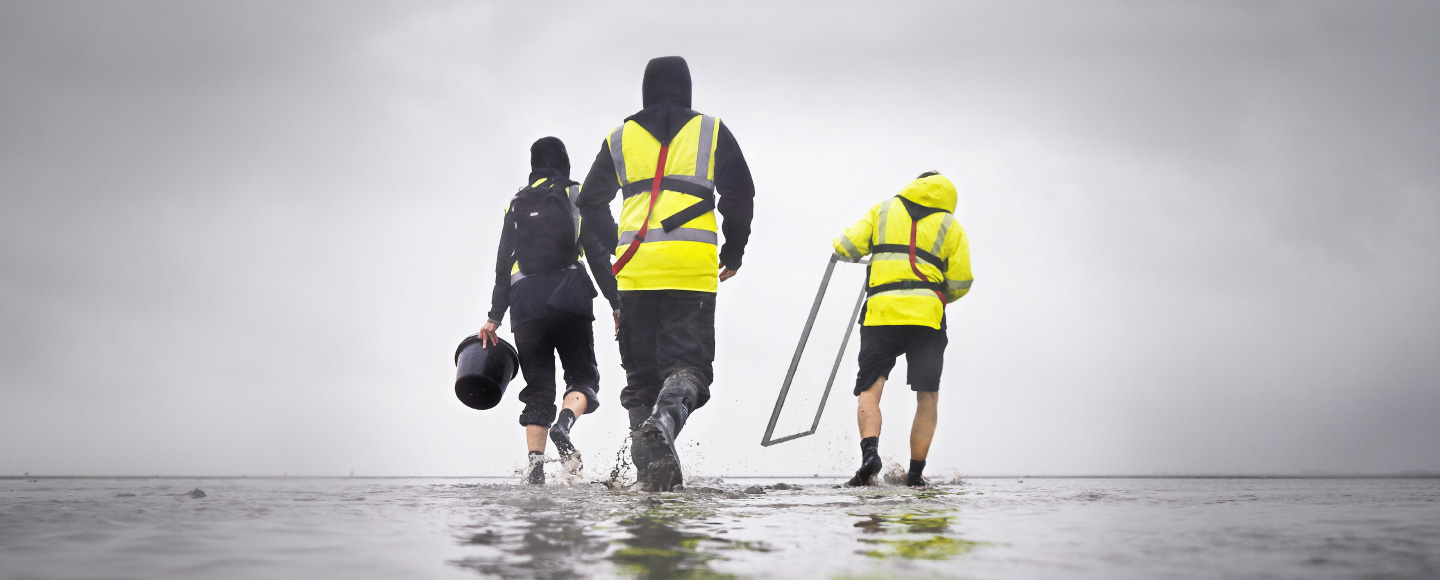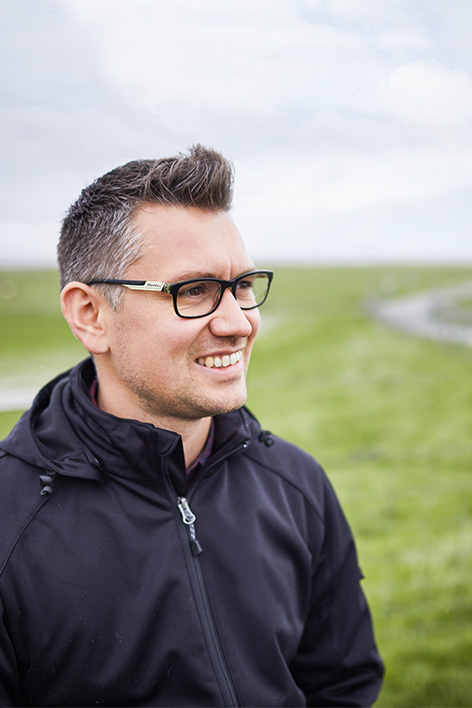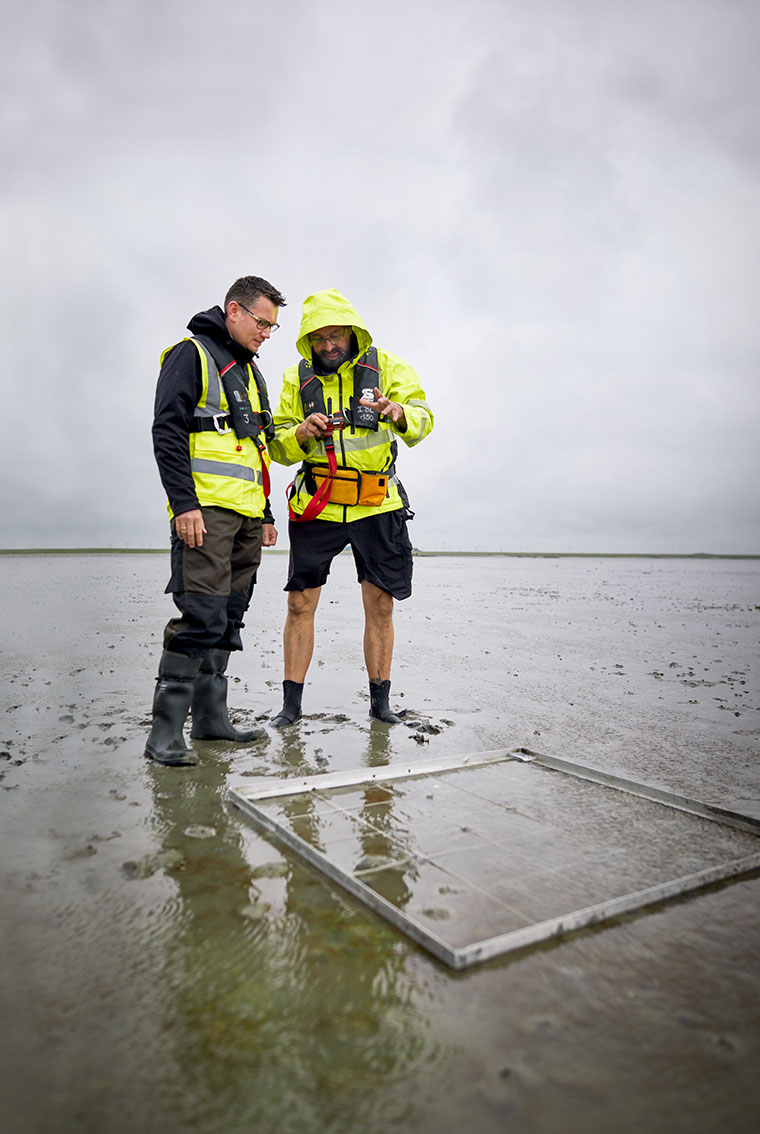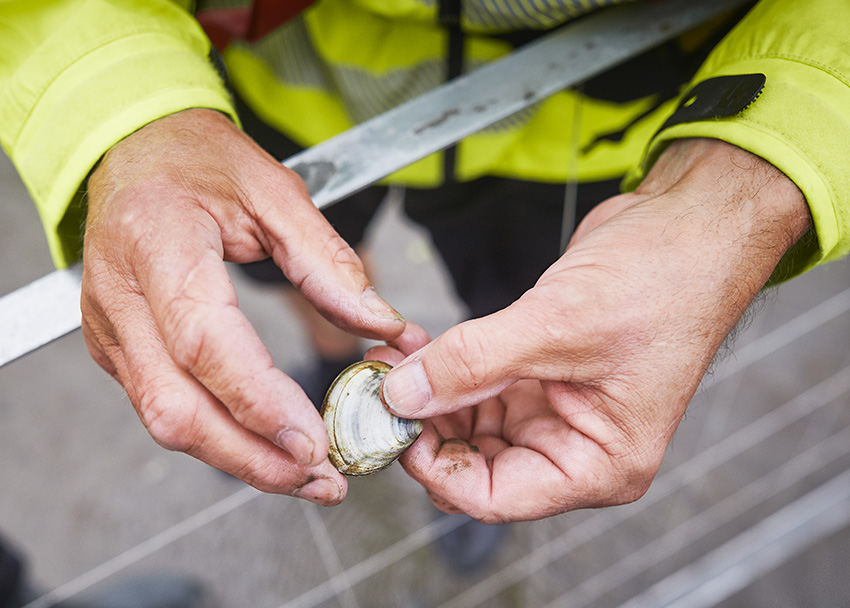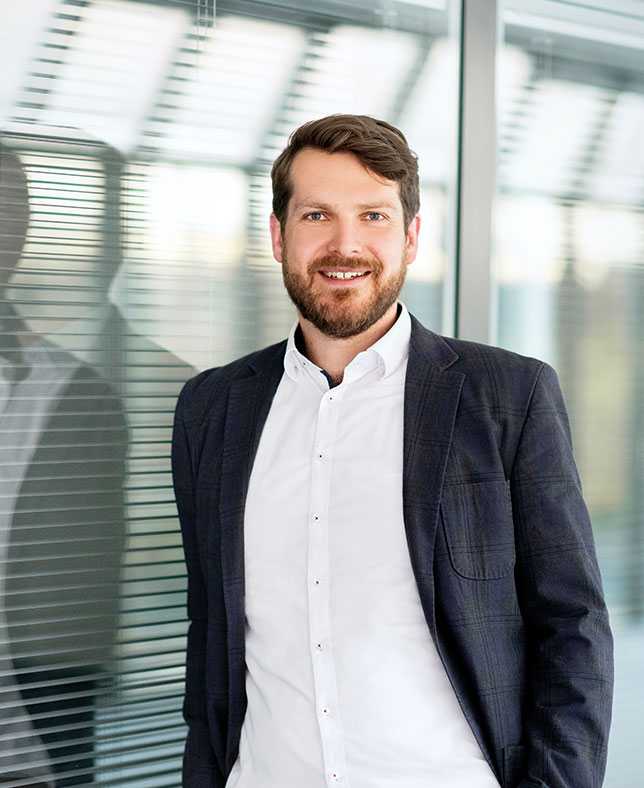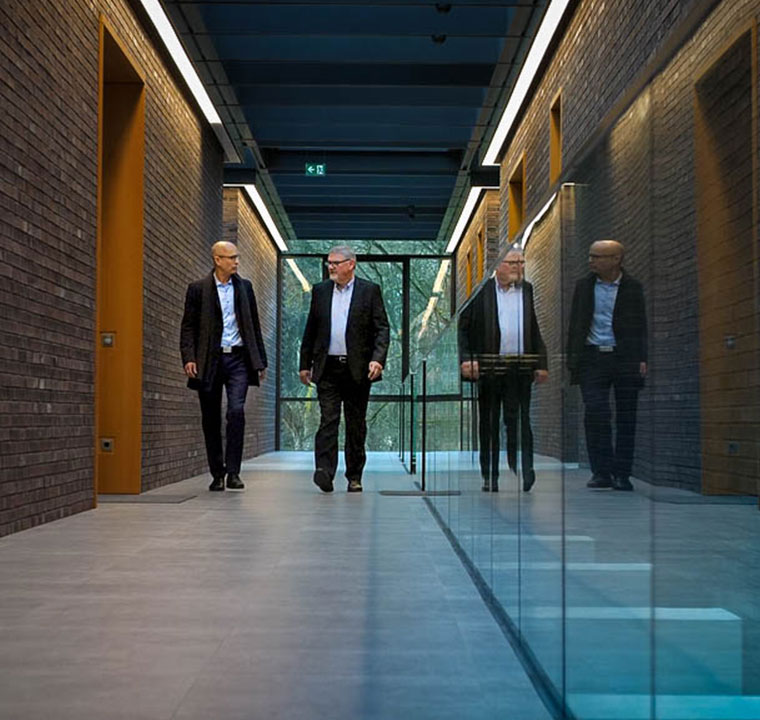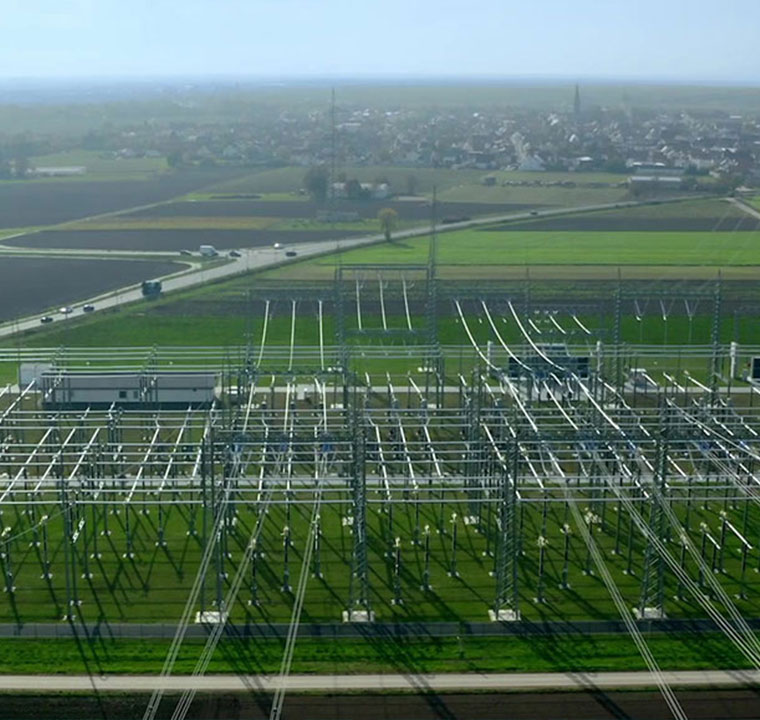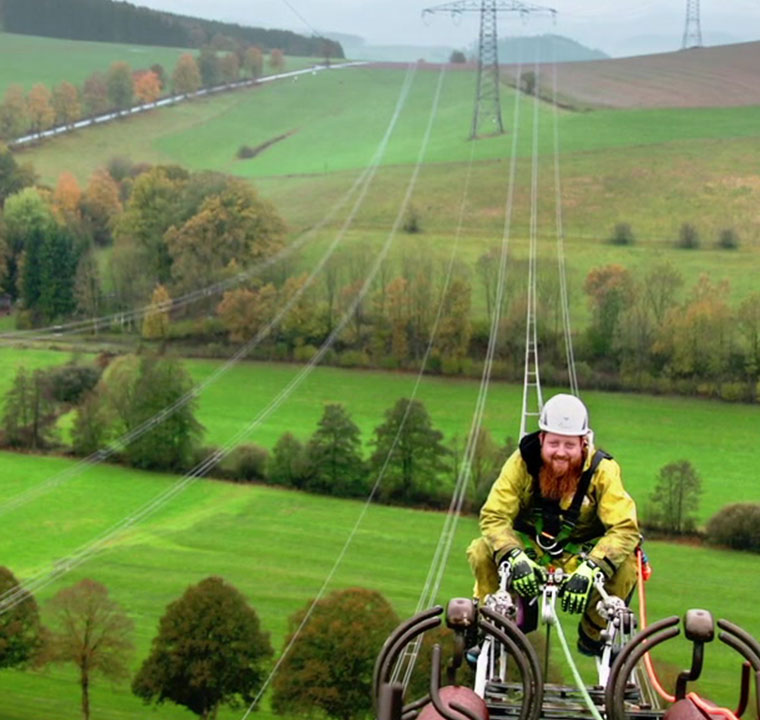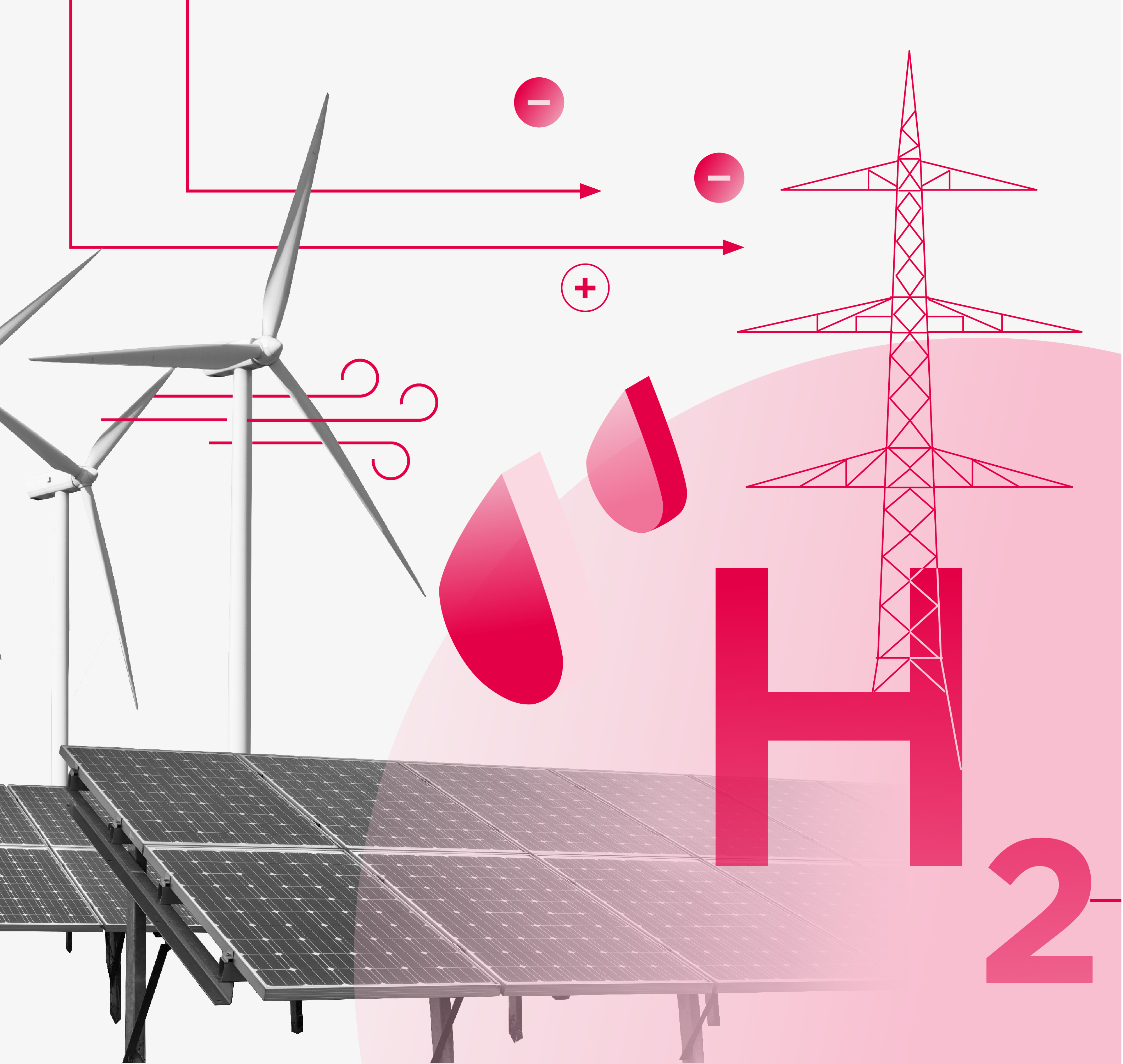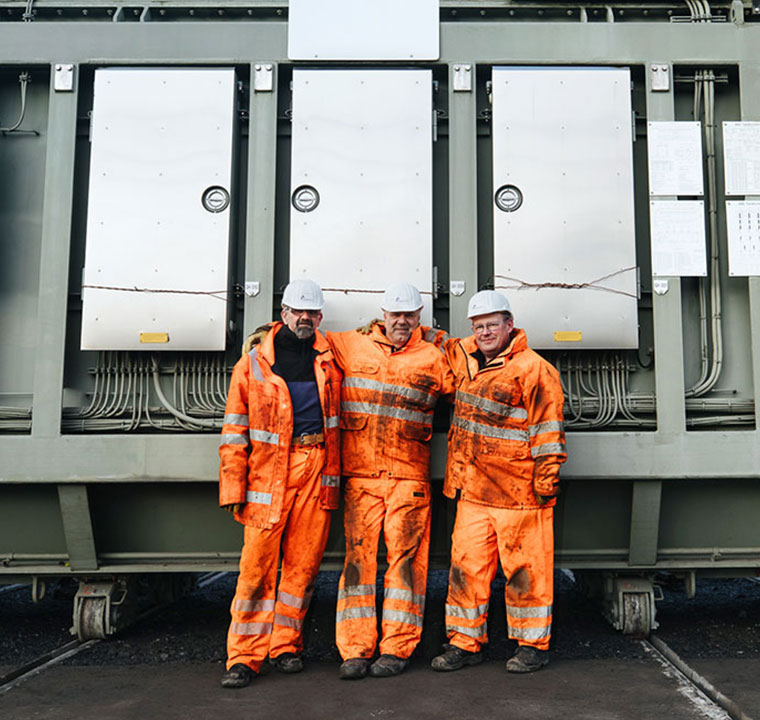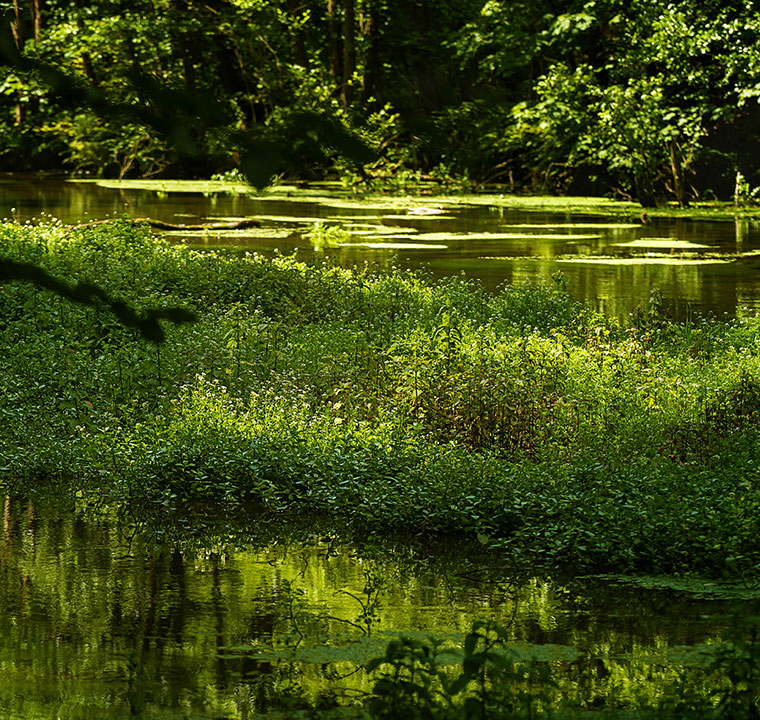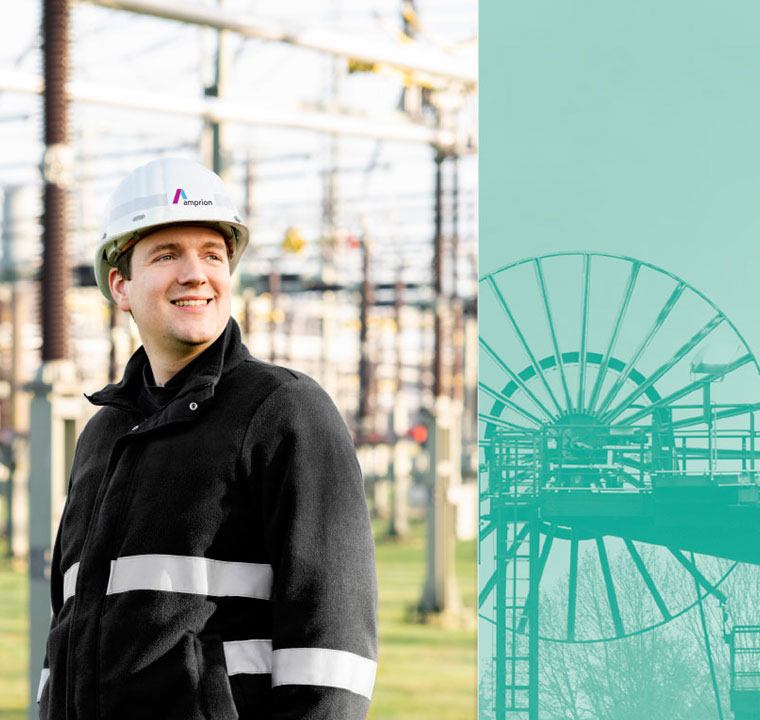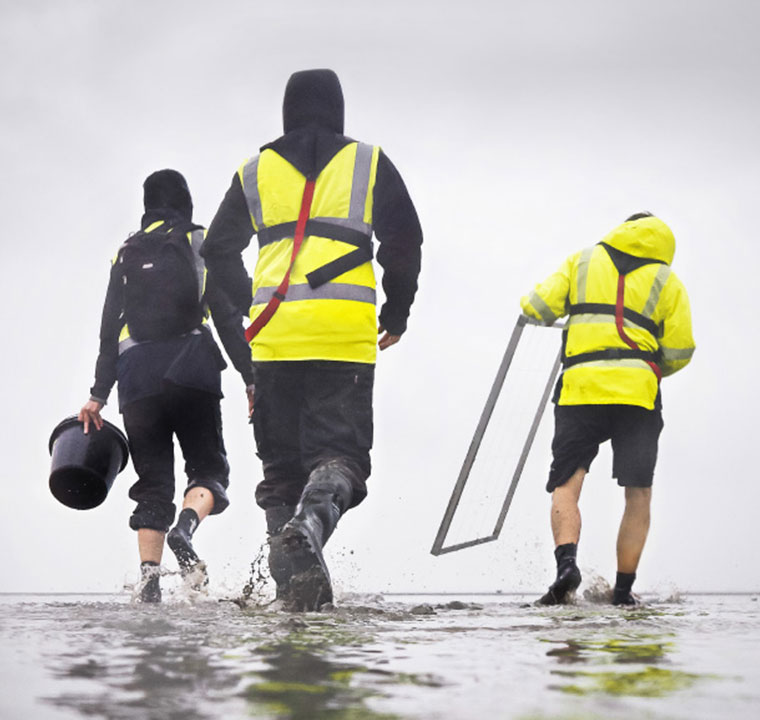The clouds hang over the Wadden Sea and the air smells of mussels and algae. In heavy rain, Christoph Evers trudges through the mudflats off the island of Norderney. The 33-year-old spatial planner negotiates tideways, which are now slowly draining as the tide recedes. There, in the sandy seabed off East Frisia, submarine cables will soon be laid to transport electricity from wind farms in the North Sea to the mainland.
Christoph Evers works for Amprion – and is one of the many new specialists the Dortmund-based transmission system operator has brought on board to help prepare for the next chapter of the energy transition: the expansion of offshore wind energy. In order for Germany to achieve its climate targets, the German government wants offshore wind farms to supply as much electricity as 20 large coal-fired power plants – and to do so by 2030. This requires not only the wind farms themselves, but also new cables connecting them to the onshore power grid. This is the only way the wind power generated offshore can reach the industrial centres in the west and south of Germany. Amprion will be investing billions of euros in this project. Christoph Evers is helping to plan these cables and to obtain the necessary permits. One of his areas of responsibility are the mudflats between the isle of Norderney and the mainland.
Until recently, everything that has been planned in this area and on the high seas was uncharted territory for Amprion. “Until now, we have planned, built and operated our transmission grid exclusively on land; that is, onshore,” says Evers, pointing towards the mainland. “Now, Amprion is going offshore for the first time.” The 33-year-old points towards Norderney. The offshore wind farms that Amprion is to connect to the grid will be erected up to 130 kilometres out to sea, behind the island. These links are expected to go online in 2028 and 2029. With a capacity of 900 megawatts each, they could cover the electricity needs of a major city such as Hamburg.
